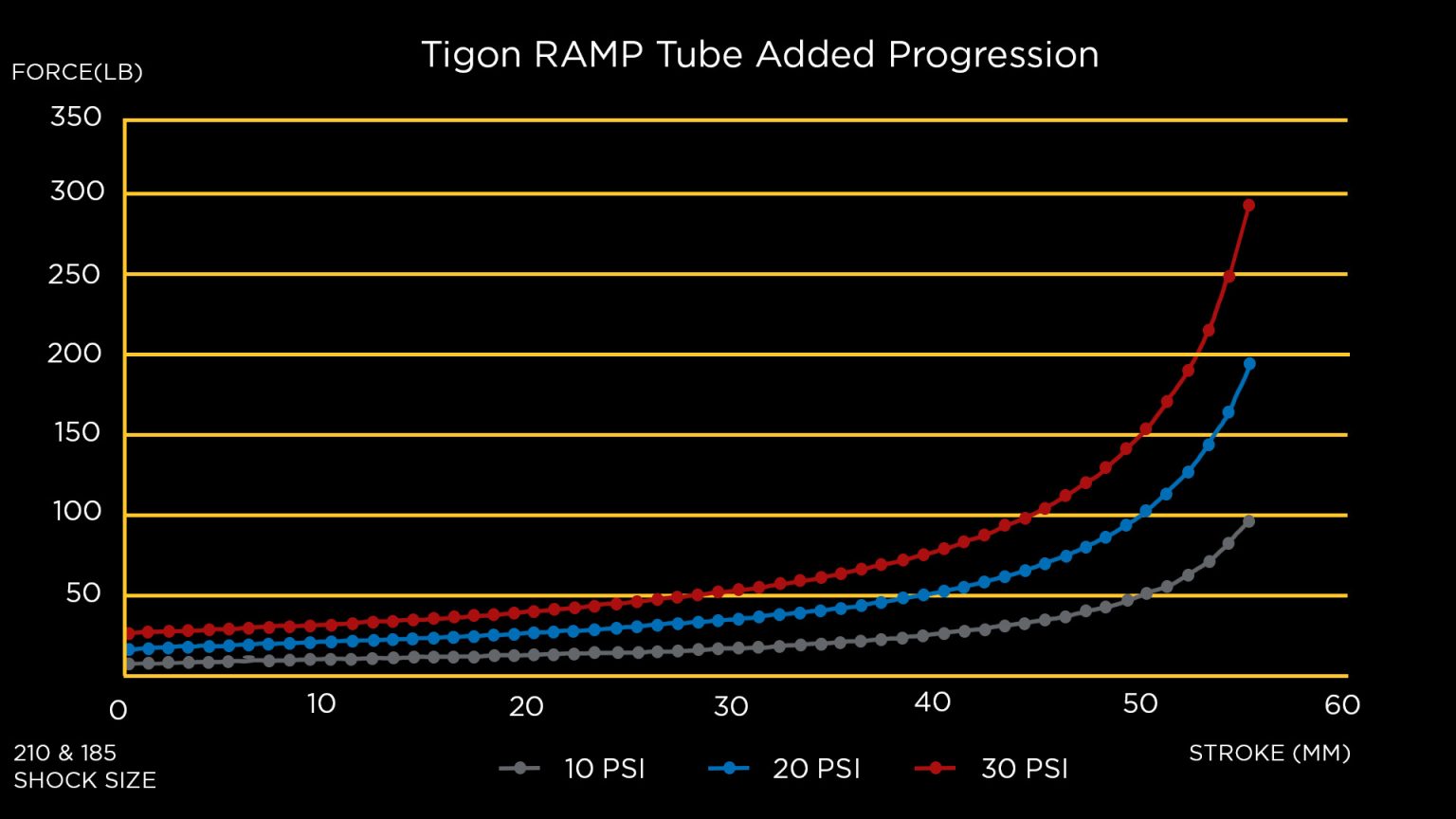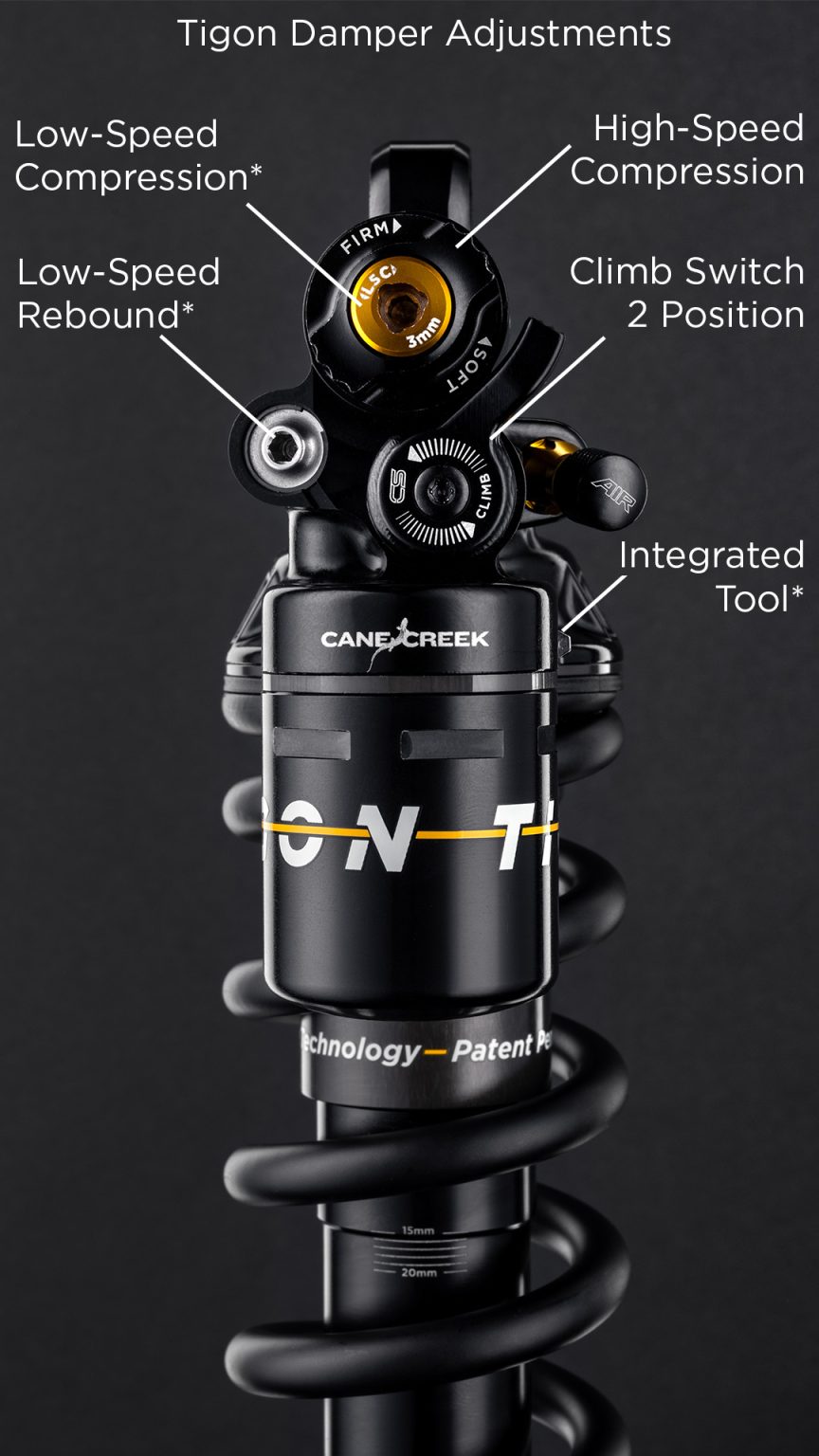PayPal now available at checkout
Free US Shipping On Orders $99+
Previous slide
Next slide
Though Tigon features both coil and air components, setup for Tigon more closely mirrors that of a coil shock, than that of an air shock.
The air in RAMP Tube is effectively a tuning component and the amount of air pressure has little to do with rider weight. In other words – the rider’s body weight is still primarily supported by the coil spring – and any air added to RAMP Tube simply controls the amount of end stroke support and overall suspension behavior that the shock exhibits.
RAMP Tube is a small air spring that works in conjunction with Tigon’s main coil spring to control the shock’s progression, or ramp in spring force. Using a basic shock pump, tune the added support of Tigon by adding pressure to the Ramp Tube.

Use the following formula to calculate your spring rate.
Rear Wheel Travel ÷ Shock Stroke x Rider Weight = Analytical Spring Rate
Round down to nearest spring rate, to maximize benefits of RAMP Tube Technology.

Install spring and make sure to reinstall the circlip

It is critical to check for clearance between your
frame and shock at all points of travel during installation of the shock.
See your Tigon Owner’s Manual for instructions on verifying frame clearance.
Installation of the shock requires the use of the
appropriate hardware for your specific frame.
With the appropriate hardware installed to the shock eyelets, mount the shock to the frame by first inserting the mounting bolts. Do not force the shock in place if there is any fitment interference with the frame.

Set sag with 0 psi in RAMP Tube
Must have 1 full turn of preload (minimum 1 full turn with the shock fully extended)
Increasing the preload will increase the starting spring rate of the coil, as well as increasing ride height and reducing sag.

With your sag set and RAMP Tube adjusted to 0 psi – Go ride a familiar trail that is repeatable and has features typical of your preferred riding terrain.
Specifically take note of any harsh bottom outs.
RAMP Tube = 30 PSI MAX
Re-check sag after adding desired air pressure, adjust coil preload accordingly.


Verify that coil spring rate and RAMP Tube pressure are correct before focusing on damper adjustments.
All Cane Creek rear shocks are hand assembled and ship with their damper adjusters set to Factory Neutral (middle of the range). We encourage you to personalize your tune and experience the full range of tuning on Cane Creek Twin Tube shocks offer!
Because no two riders are the same, Tigon’s damper adjustments include:
*Adjusted with integrated 3mm allen wrench
See DB Rear Shock Tuning Guide Page for an in-depth look into Cane Creek’s independent damper adjustments.

Monday: 10:00 am – 5:00 pm
Tuesday – Thursday: 10:00 am – 7:00 pm
Friday: 10:00 am – 5:00 pm
Saturday – Sunday: Closed